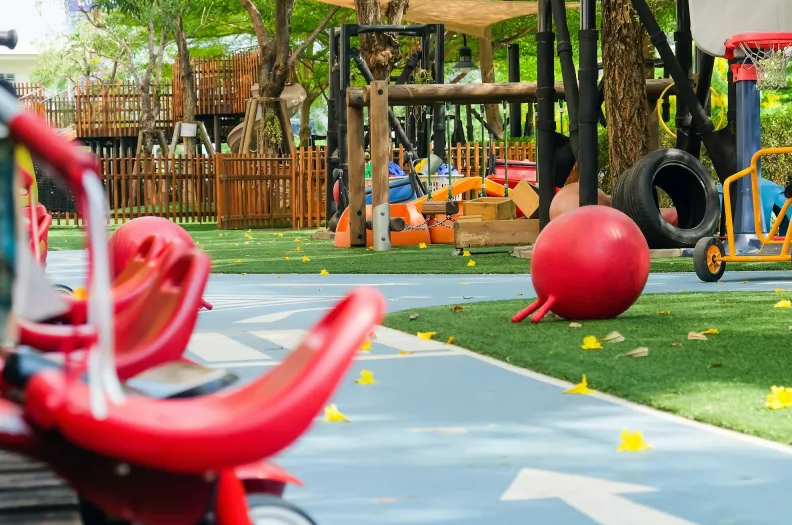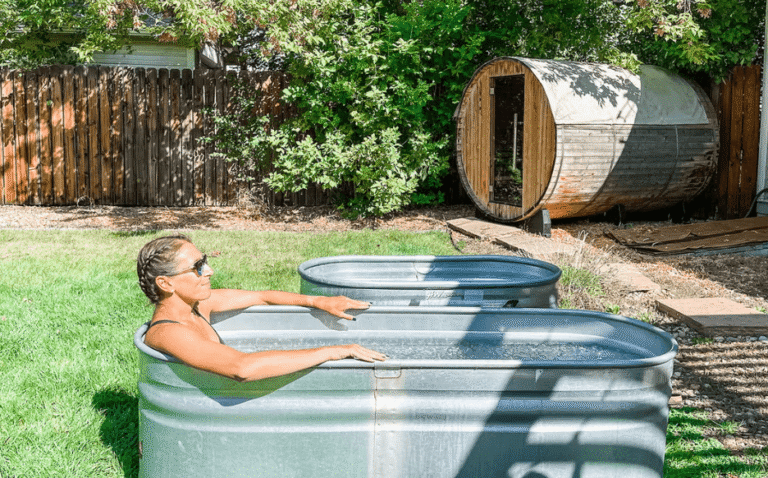Storm-Ready Play Spaces: Protect and Preserve Your Turf
Playgrounds and recreation areas deserve surfaces that stay safe and clean through severe weather. In Georgia, many property managers and homeowners choose synthetic turf to achieve a consistent look with reliable performance. Preparing these surfaces for hurricane season requires a practical plan that addresses wind, water, and debris so that children and families can return to play quickly and confidently.
Know the Weather Threats Before They Arrive
Hurricanes deliver three forces that challenge any outdoor surface: sustained wind, heavy rain, and airborne debris. Wind exploits weak points at edges and seams. Rain tests the drainage profile and sub-base, and lingering water can encourage microbial growth if it does not move through the system. Debris can puncture fibers, scar the backing, and redistribute infill. A clear understanding of these risks guides every subsequent preventive step.
Build Drainage From the Ground Up
Storm performance starts below the surface. A well-graded, compacted aggregate base provides structure, promotes flow, and resists washout. The profile should carry a consistent slope away from buildings, play equipment, and walkways so that water exits predictably. Permeable backing allows rapid vertical drainage into the base, and perimeter drains or swales carry runoff to safe discharge points. Before storm season, clear gutters, downspouts, channel drains, and catch basins; a clean pathway for water often makes the difference between a speedy recovery and a prolonged closure.
Secure Edges and Strengthen Seams
Edges and seams act as anchors during high wind. Inspect every linear foot for gaps, uplift, or adhesive failure. Rebond any loose sections with the manufacturer-approved adhesive and seam tape, and confirm full contact under gentle pressure. At perimeters, confirm that spikes, fasteners, or nailer boards remain firmly seated. Where turf meets hardscape, check that the edge restraint is continuous and intact. A secure boundary helps keep the field stable when gusts arrive.
Manage Infill for Stability and Drainage
Infill supports fibers, cushions footfalls, and adds ballast. Verify depth across high-traffic zones such as slide exits, swing bays, and entry paths. Top off thin areas so the field remains level and resilient. Select infill blends that strike a balance between weight and permeability, and that do not migrate excessively during heavy rain. After a storm, rake or brush to redistribute material evenly, then spot-measure depths to confirm consistency.
Prepare a Pre-Storm Checklist You Can Execute Quickly
Preparation reduces downtime. Walk the site and remove loose items such as benches, planters, toys, and temporary signage so they do not become projectiles. Trim overhanging branches that could snap and fall. Sweep leaves and fine debris from the surface so drains do not clog at the first downpour. Groom fibers with a stiff broom to stand them upright; this promotes even flow across the face of the field. Photograph edges, seams, and any previously repaired areas. These reference images simplify post-storm inspection and documentation.
Follow a Clear Post-Storm Protocol
Safety comes first. Once winds subside, survey the area for hazards such as downed lines or unstable trees. Remove branches, twigs, and windblown trash by hand rather than dragging heavy tools across the surface. Rinse with clean water to flush fine sediments toward drains, and clear any grates or inlets that begin to collect silt. Inspect edges and seams for uplift, check infill levels, and look for ripples that may indicate base displacement. Please address small issues promptly, as a lifted seam that is re-bonded today is much easier to fix than a widened gap next week.
See also: Can CPR AED First Aid Certification Help in Daily Life?
Protect Hygiene and Surface Health
Standing water leaves behind organics that can feed microbes. After rinsing, allow the field to dry, then apply an approved cleaner where needed, focusing on shaded areas and low points. Brush fibers to restore vertical orientation and to expose any hidden abrasion or cuts. If pets use the area, finish with a targeted enzymatic treatment so the surface remains fresh after heat and humidity return.
Preserve Accessibility and Play Quality
Uniform footing supports safe movement for children, caregivers, and visitors who use mobility devices. Check for uneven transitions at borders and walkways, confirm that the surface is firm underfoot, and level any shallow depressions with infill. Maintain clear sightlines by removing storm-damaged shrubs that lean into pathways. The goal is a field that looks ready for play and also feels predictable with every step.
Plan Seasonal Maintenance That Pays Off All Year
Consider developing a straightforward schedule and adhering to it. Monthly, brush the surface, spot-rake infill, and rinse any dust or pollen that accumulates. Quarterly, verify edge restraint, measure infill depth in a grid pattern, and conduct a quick hose test at drains to confirm unimpeded flow. Annually, review high-use zones and consider a professional tune-up that includes power brushing and infill top-off. Small, routine tasks preserve appearance, extend service life, and make storm recovery faster.
A thoughtful plan for hurricane season keeps surfaces safe, clean, and ready for families to enjoy. With sound drainage, secure edges and seams, consistent infill, and a clear checklist for both preparation and recovery, artificial grass and synthetic turf can deliver dependable performance in Georgia. For site-specific guidance, product selection, and expert artificial turf installation, connect with Artificial Turf Tampa for support that aligns with your goals and your timeline.






